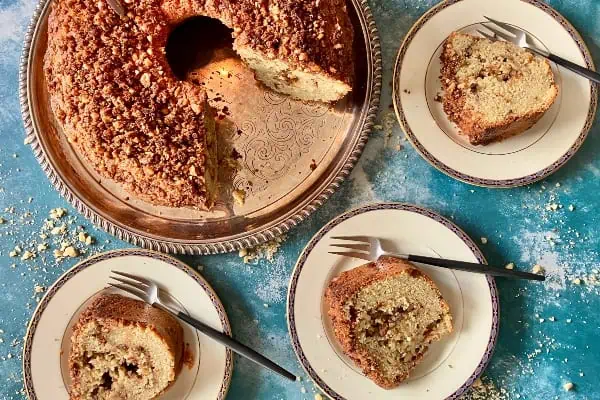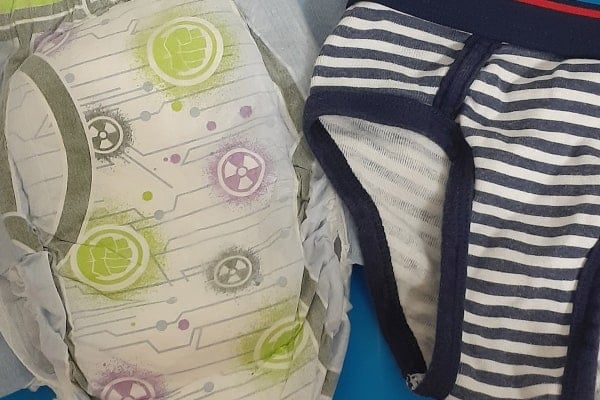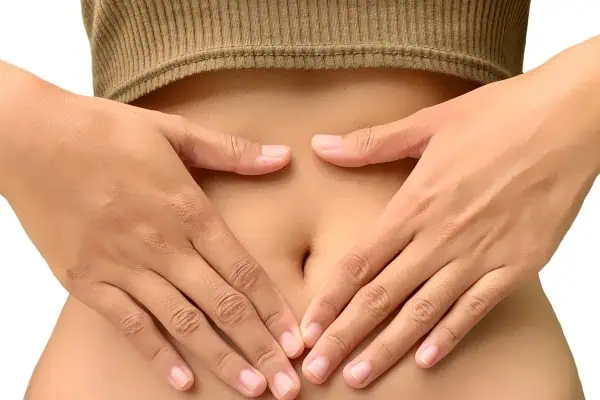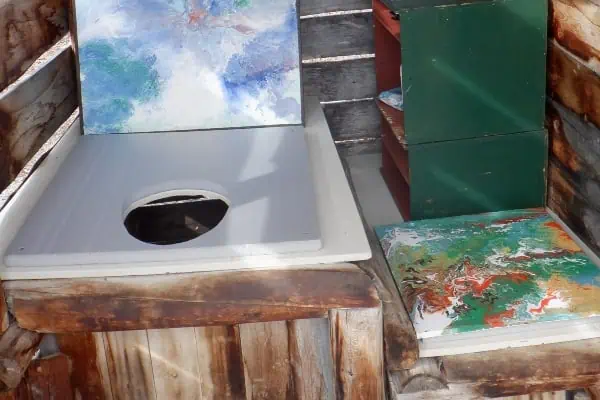It wasn’t long ago that I discovered something called the Bristol Stool Scale. Naturally, as it was a British friend who first mentioned it, I assumed he was going to describe a scale to depict the comfort of bar stools perfectly aligned in the pubs of Bristol, back home in England. If the bar stools were rated on a simple scale of 1–7, it would be easy to pick the most-comfortable seat in the pub to sit on and sip a pint of warm brown ale. My reminiscing about pubs and brown ale was soon brought to a standstill when the word poop was mentioned. It turns out the Bristol Stool Scale is all about the quality of poop—not bar stools.
Poop is an extremely good indicator of how well your insides are functioning. The colour, texture and frequency of poop should all be monitored carefully, because any drastic changes in any of these properties may indicate health concerns that should be addressed straight away. Not being the most-photogenic of subjects, I have included illustrations of poop, instead of photos, to help you recognize where your poop sits on the Bristol Stool Scale.
Not all poops are #2s …
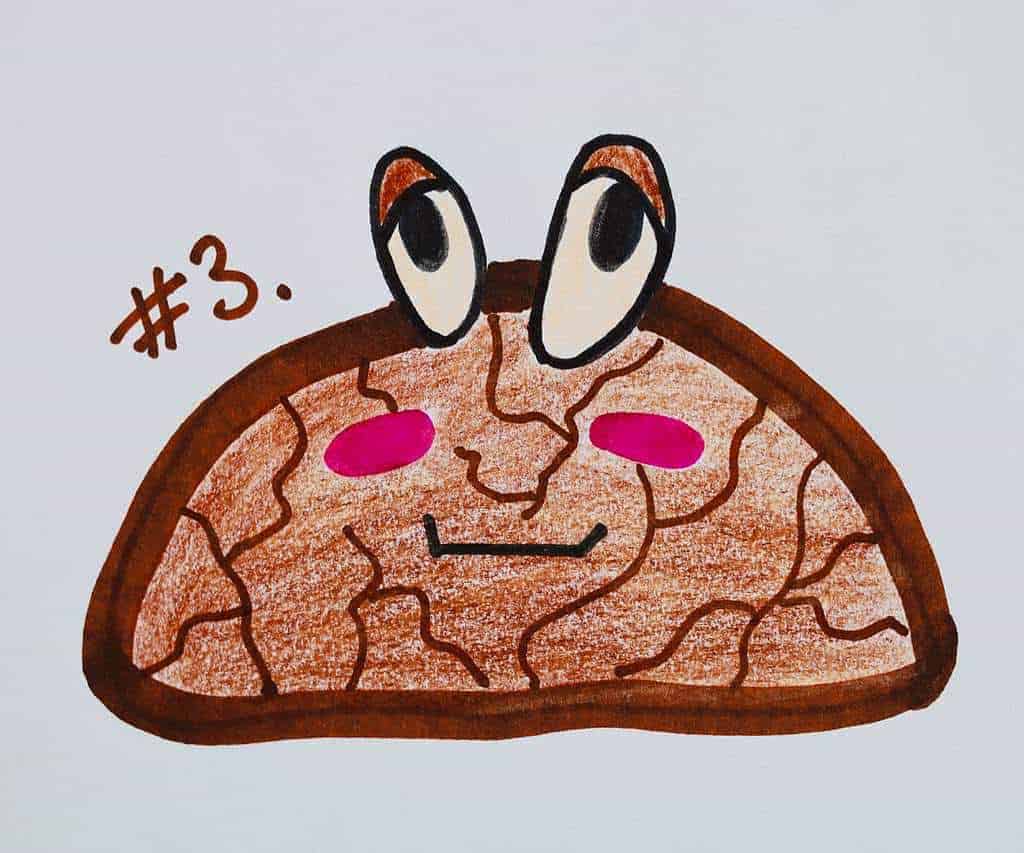
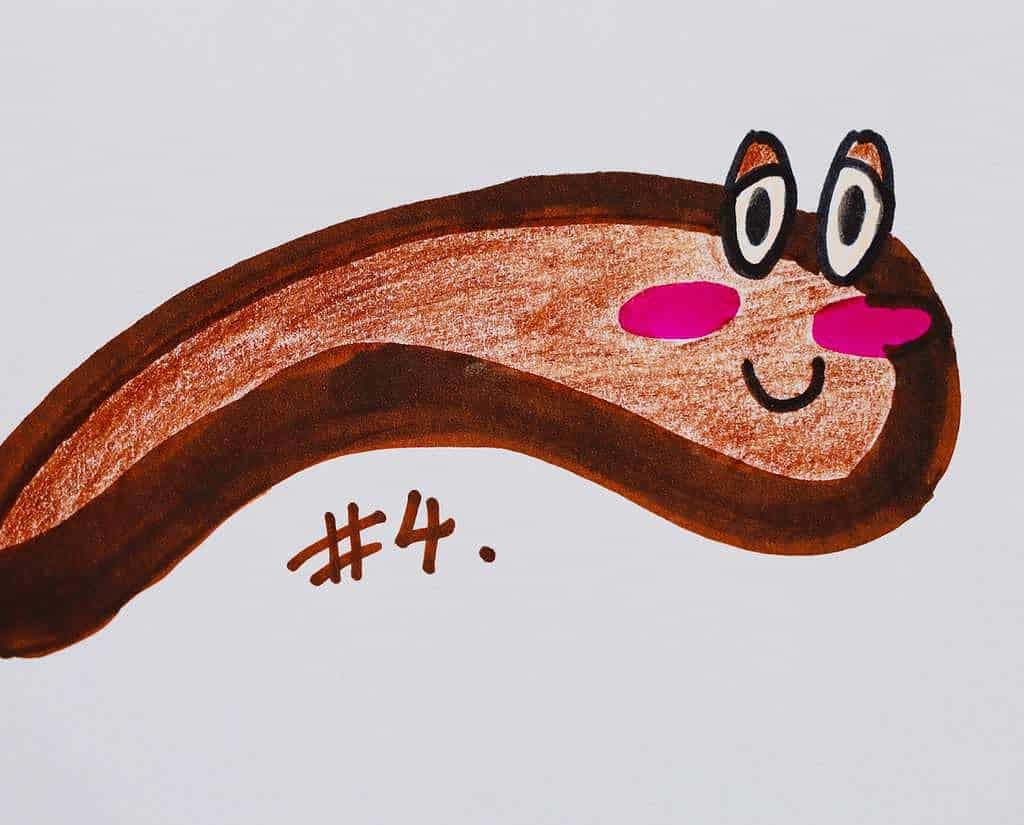
First up are the healthy poops, numbers 3 and 4 on the Bristol Stool Scale. These are the poops we should all strive for and be proud of when they show up in the toilet bowl, or down the outhouse (if you can see that far).
Number 4, the perfect poop, is smooth sided, “sausage or snake-like,” and approximately the diameter of a banana. This poop should slip out easily and hold its form in the toilet, even when flushed. Its natural brown colour indicates a healthy amount of moisture and nutrients when it is passed.
Not far behind, in the ratings of healthy poop, is type 3. Described as “normal” on the scale, it is slightly more cracked (indicating not quite enough moisture). This poop is still sausage shaped, holds its form and is easy to pass. Bravo, if you are a producer of number 3s.
If your poop looks like these little guys (and you are not a rabbit), you are probably constipated. These small, hard, round balls are rated as type 1 on the Bristol Stool Scale. There is no sitting around, enjoying a magazine, when these guys want out. Hard work to pass, for very little reward, type 1 poops are a sure sign of severe constipation.
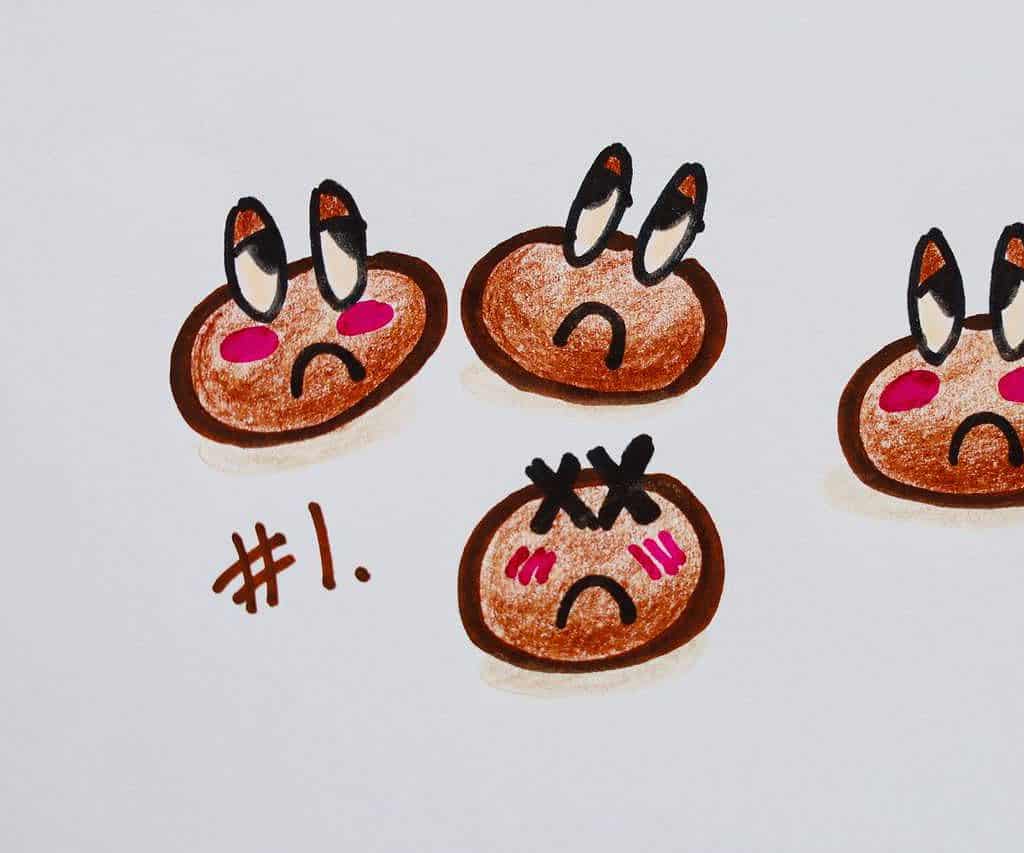
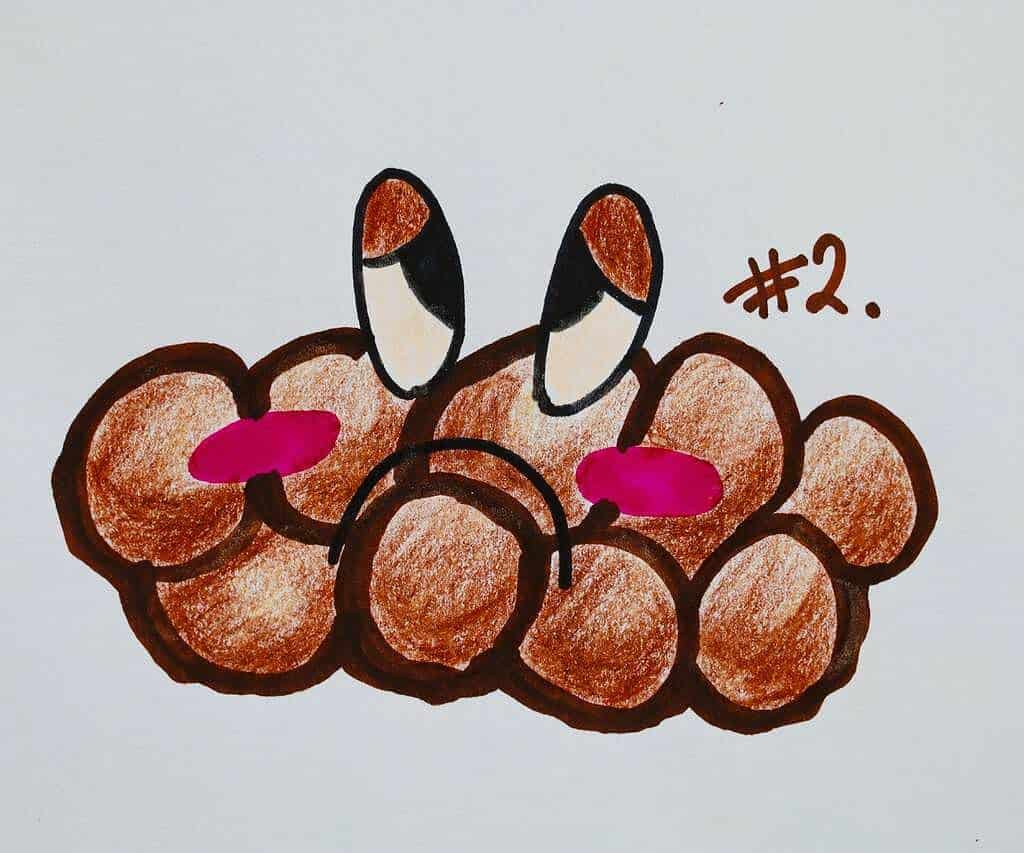
Closely related to type 1 nuggets, type 2 poops are also a sign of constipation. These nuggets have been glued together, in your intestines, to form one cohesive mass. Untreated, constipation can lead to all sorts of related health problems. Drinking the recommended two litres of water, per day, and increasing your fibre intake are the first steps to healthier poops. Fluids and fibre should smooth out the poops and create a more-pleasant pooping experience, all round.
Watery poops are better known as diarrhea and come in types 5, 6 and 7 on the Bristol Stool Scale. If you are passing “soft blobs with clear-cut edges,” you could be doing better. These type 5 poops are a sign that you need to get more fibre in your diet. It will help both soften and bind your poop.
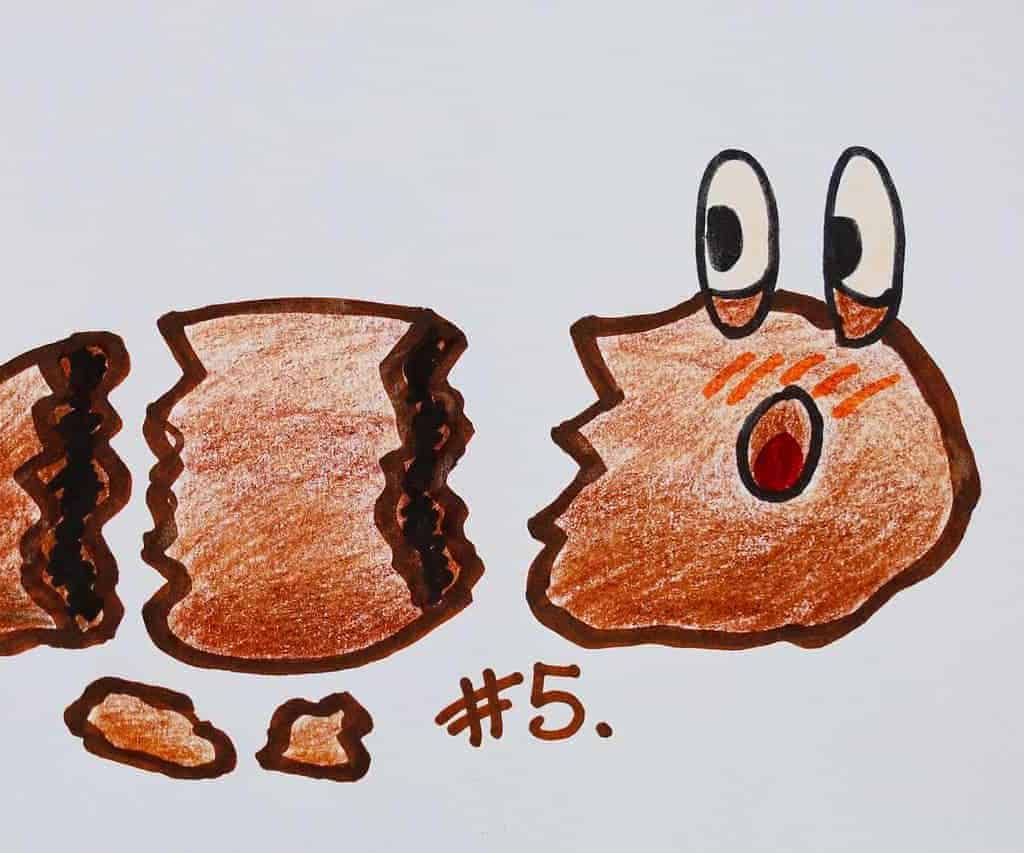
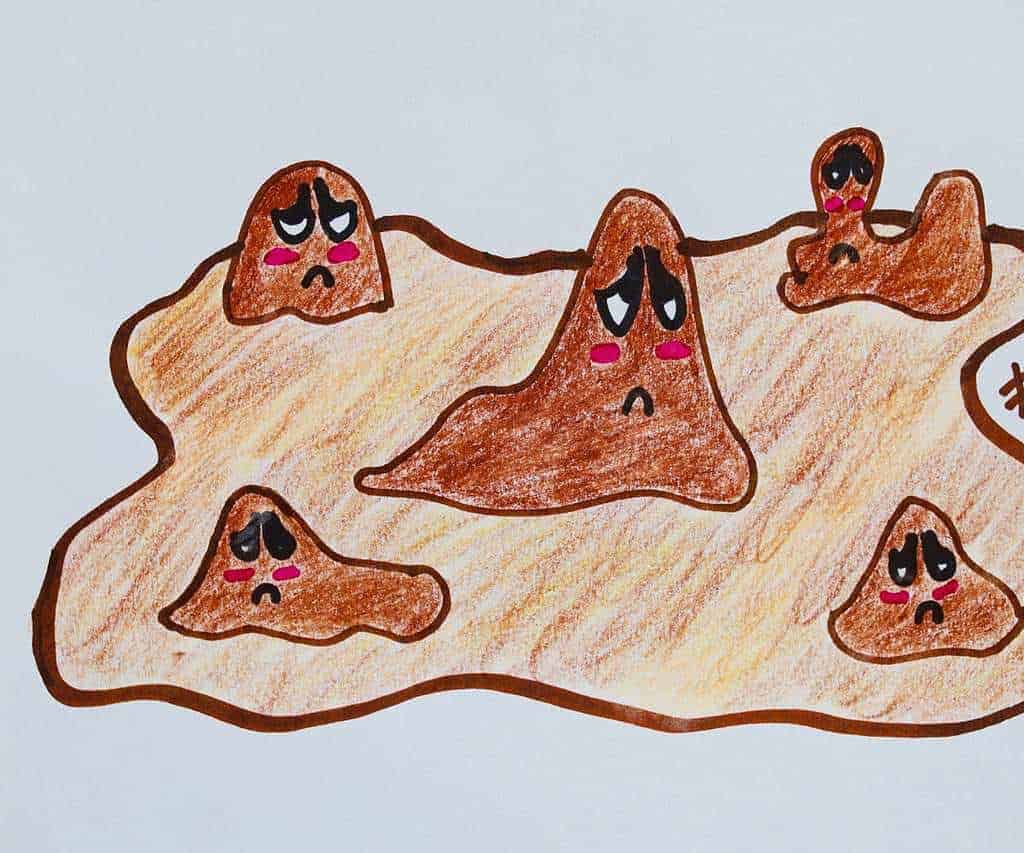
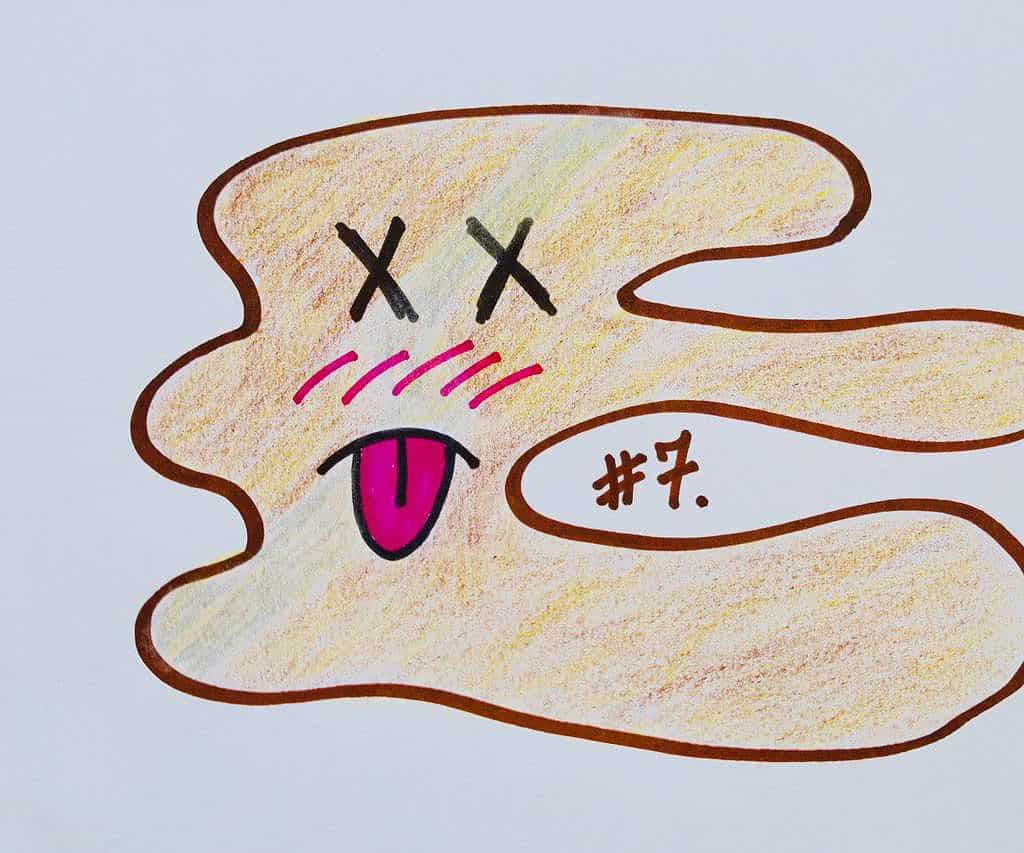
Look out, look out, there are bugs about. If type 6 poop slides its way out of your bowels, your body is trying to evacuate the problem. You might want to stay close to home if you are experiencing type 6 poop (or make sure you can run fast). Described as “fluffy pieces with ragged edges; mushy,” this poop can be brought on by high stress and dietary issues.
If you are still reading at this point in the article, well done. You have made it to type 7, which, at this stage, can hardly be described as “poop.” Masquerading as gas, this poop is entirely liquid, with no solid matter in sight. Prolonged diarrhea can lead to dehydration and even death, if not treated properly, so make sure you see a doctor if type 7 is a frequent visitor to your loo.
The Many Colours of Poop …
Form and consistency are not the only indication of the quality of our poop and intestinal health; colour also holds some important clues.
Milk-chocolate brown poop is the most perfect colour of all. If this is the typical poop that you pass daily, you are on the right track. Keep up the good work.
A healthy diet, full of leafy greens, can add a green tint to your poop. However, if a stool moves too quickly through the digestive system, bile pigment can’t break down properly and your poop won’t have time to turn from green to brown. Green poop, without the leafy greens, is cause for concern. Antibiotics, parasites and bacteria, such as salmonella, can cause your gut to work faster than normal.
Black poops should get your alarm bells ringing. This is a sign of excessive dried blood in your intestines. Often caused by hemorrhoids, black poop can also indicate much more serious conditions, such as inflammatory bowel disease (IBD). Seek medical advice.
Unless you have been eating an excessive quantity of beets or red food dye, red poops are a sign of an internal bleed. Seek medical help right away.
And please, if you have white or clay-coloured poop, go to a doctor immediately. No colour means no bile and can indicate anything from a blocked bile duct, to liver disease. This is not a normal or healthy colour for poops.
There are a plethora of medical conditions associated with yellow poop, which range from liver and gallbladder issues, to chronic pancreatitis, pancreatic cancer and celiac disease. Yellow poop can indicate that your digestive system is not digesting nutrients properly. Coupled with a foul smell, you may be suffering from a malabsorption disorder. Make the time to see a doctor.
Around the Poop Clock …
Frequency of bowel movements is another good indicator of intestinal health. Have you ever noticed the same person missing, after dinner, at the same time every night, just when it is time to do the dishes? If they are truly pooping (and not just trying to avoid cleaning up the kitchen), they are exhibiting a regular pooping pattern … a good indication that everything is ticking along just fine. It is considered healthy and regular to poop one or two type 4 poops a day. A slight deviation from your regular bowel movements is nothing to worry about. If, however, you are no longer able to poop at all, or you spend the entire day on the toilet, it’s time to talk to a healthcare professional.
Taking the time to check out your poops, whenever you “drop them off,” is time well spent during your bathroom break. Knowing your poop is one step closer to understanding and maintaining overall health and wellness.
Seven simple steps to help the production of regular, chocolate-brown, #4 poops …
- Lower your stress levels.
- Get enough sleep (7–8 hours of uninterrupted sleep per night).
- Eat slowly.
- Stay hydrated.
- Eat a diverse diet, rich in whole foods, including vegetables, legumes, beans and fruit.
- Eat fermented foods, such as yogurt, kimchi, sauerkraut, kefir, kombucha and tempeh.
- Exercise each day.
The 40-trillion bacteria in your gut will thank you for your efforts and, in exchange, contribute to your overall health. A healthy gut microbiome will happily produce #4s, for you, on a daily basis.
It seems fitting to finish an article on poop with a little toilet humor, so before I leave you to your bathroom business, have you ever wondered why Tigger stuck his head in the toilet?
It was to look for Pooh, of course!

